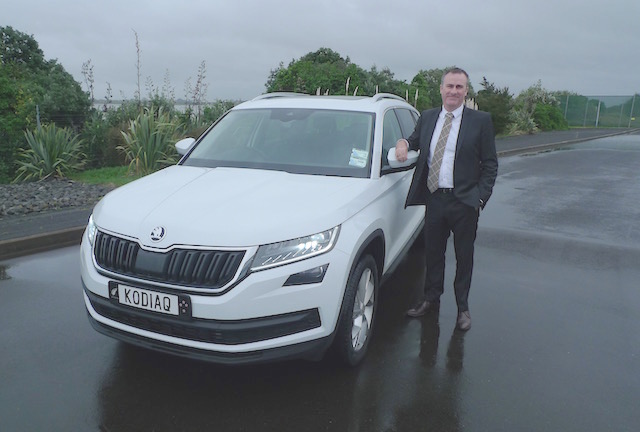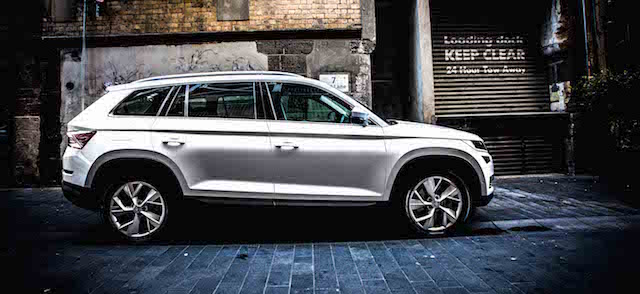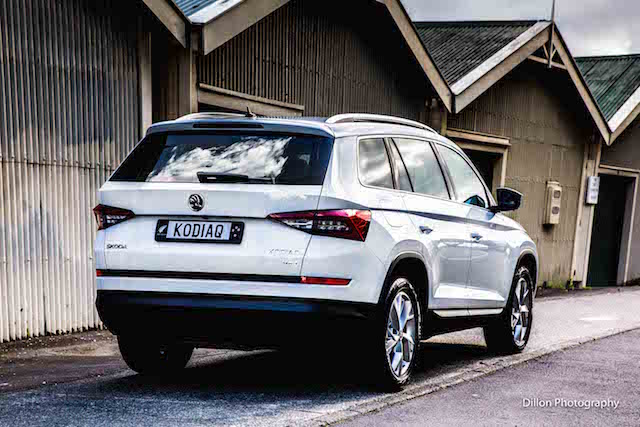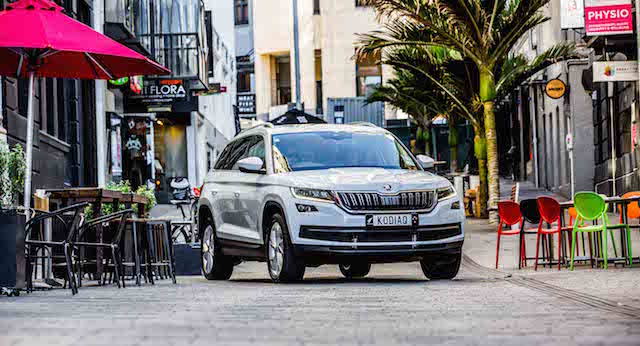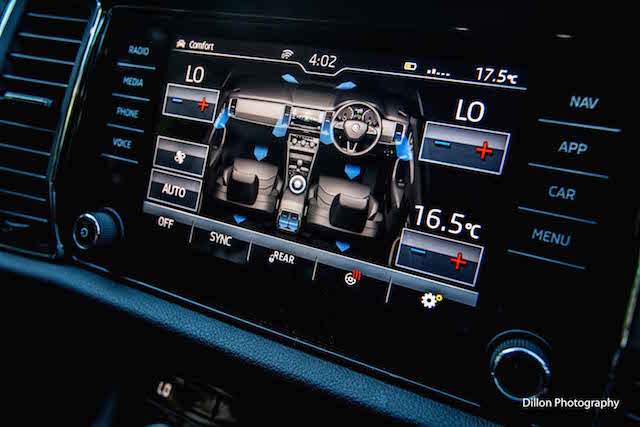
The first sign Skoda’s head office in New Zealand knew it was on to a good thing with its seven-seat Kodiaq SUV was when it posted on Facebook images of the vehicle itself, many months before it landed in the country.
The ‘Likes’ came quickly, along with a favourable comment here and there. NZ general manager Greg Leet personally replied to each one. The first day on Facebook went into the second day on Facebook. And so it went on.
It wasn’t long before around 1000 people had registered their interest in the Kodiaq – 85 per cent said they had never owned a Skoda. Kodiaq’s reputation via glowing British and European evaluations had preceded it. “The response was unheard of for Skoda in New Zealand,” said Leet.
Soon after the first shipment of Kodiaqs landed, Leet (above) was visiting a Skoda dealership. Sitting at a desk in the showroom was a fellow whose face Leet recognised from Facebook, one who had commented on the first of the Kodiaq postings. He had just bought the SUV and was filling out the paperwork with the salesman.
“I went over and introduced myself,” said Leet. “I said I was the guy who he’d been dealing with on Facebook. It was so satisfying. We had worked for almost a year to bring Kodiaq to New Zealand and it was exciting to see a customer buying it.
“It seemed we’d got all the bits right in the build-up. I asked him to stay in touch, that I wanted his feedback. We want feedback from every owner.”
Therein lies the company’s marketing strapline for Kodiaq: “It’s a family thing.” The television ad campaign starts this week. Said marketing manager Ross Hill: “We want to mature the brand, double the relevance, and engage with active families, to spread the love across the Skoda brand.”
Spread the love? The urban phrase has been defined as “Not knowing where you are, but feeling good about it.” Leet and his team know where Skoda is going. And they are feeling pretty good about it.
There will be a new SUV every year through to 2020, including a plug-in hybrid. The smaller Karoq SUV – the replacement for the Yeti – is due next year. A battery-electric coupe is expected in 2020.
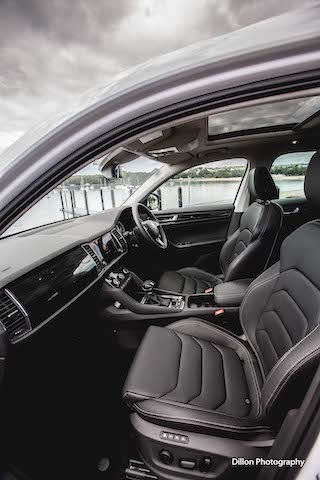 By then Leet expects to be selling well over 2000 vehicles annually, from a projected 1800 in 2018. “It’s important we keep getting our brand known.” In 2015, Skoda NZ sold 1006 vehicles. “We’ve experienced 20 per cent growth year-on-year.”
By then Leet expects to be selling well over 2000 vehicles annually, from a projected 1800 in 2018. “It’s important we keep getting our brand known.” In 2015, Skoda NZ sold 1006 vehicles. “We’ve experienced 20 per cent growth year-on-year.”
Globally, orders for Kodiaq are running 100 per cent over production capacity. The factory in the Czech Republic has allocated Leet and his team 380 for 2017. “I asked for more,” said Leet. “They got back to me and said ‘Good news, we can give you one more.’”
So what’s all the fuss about? For starters, a whole bunch of stuff: the Kodiaq price, list of standard equipment, clever interior packaging, infotainment offerings, and the Skoda package of Simply Clever extras, like the cup-holders that grab hold of a bottle of water so you can open it with one hand.
Then there’s the removeable LED torch; the automatic door-edge protectors; the foldaway umbrella in the rear door; the sticky velcro pieces that lock groceries or whatever in place in the rear …
The factory wanted Leet to kick Kodiaq off at around $44,000. He argued that, in order to secure continued growth for Skoda in a NZ market saturated with SUVS (upwards of 50 per cent of all new vehicle sales in April), the introductory price needed to be sharper.
Leet and the factory settled on $39,990. “That $40,000 price point is critically important because that’s where everyone is buying these cars,” he said.
That’s for the entry-level model, the one called Ambition with half-leather seats, 18-inch alloys, and a braked towing capacity of 1800kg. It runs a 1.4-litre TSI petrol engine that delivers 110kW between 5000-6000rpm and 250Nm between 1500-3500rpm. Drive goes to the front wheels via a six-speed DSG transmission.
The four-wheel-drive Ambition + uses the same powertrain, same sized wheels, but gets extra goodies, full leather heated seats among them. Braked towing capacity is 2000kg. It costs $44,990.
The drivetrain raises the question: A turbocharged 1.4-litre engine, a long-time small hatchback powerplant, pushing around an SUV bigger than the Hyundai Santa Fe and weighing between 1500-1600kg? Really? “None of those who registered interest in Kodiaq mentioned the engine size,” said Leet.
Performance from the boosted 1.4-litre leaves some rivals with bigger engines behind, according to Skoda numbers. Nevertheless, Leet believes that upwards of 60 per cent of sales will be taken up by the premium 2.0-litre petrol and diesel variants, badged Style. Both have a braked towing capacity of 2000kg.
The $54,290 Kodiaq Style uses a 2.0-litre TSI petrol engine developing 132kW between 3900-6000rpm and 320Nm between 1400-3940rpm. It uses a seven-speed DSG unit driving all four wheels.
Top of the range is the diesel Style, priced at $58,290 and the heaviest at 1723kg. Its 2.0-litre turbo-diesel delivers 140kW between 3500-4000 and 400Nm between 1750-3250rpm and also uses the seven-speed DSG.
I didn’t get the chance to drive the Ambition front-drive or four-wheel-drive models at the launch on roads south-west of Auckland, only the top-line diesel Style. Nothing much to complain about the cabin and seating, ride and handling was predictable, the four-wheel-drive system directed more torque to the rear wheels here and there for traction …
All in all it’s a sharp package with plenty of equipment … adaptive cruise control with automatic braking, self-parking, lane-assist, blind-spot warning, adaptive suspension, 19-inch wheels. The panoramic roof is a $2500 option.
SUVs might fall into the passenger car segment, but they have a higher centre of gravity than traditional sedans and wagons. The lighter 2.0-litre petrol Kodiaq Style isn’t, on paper at least, as nose-heavy as the diesel Style, therefore it is sure to be the better allround handler with a more responsive throttle. The diesel of course will be more fuel-friendly.
Kodiaq sits on the Volkswagen Group’s MQB platform, pretty much the same base as the VW Tiguan. The Tiguan was one of the three finalists in the 2017 World Car of the Year. Kodiaq comes with seven seats. Tiguan has five and will get seven later in the year.
A few years ago VW became so concerned with European buyers’ preference for some Skoda models over similar VW offerings that it wanted Skoda to dumb down some of its products. Last year Skoda’s global profit margin was 7 per cent. VW’s was 2.5 per cent.
Skoda’s core appeal has unsettled parent VW. That Skoda got the seven-seat Kodiaq in far-flung NZ before the seven-seat Tiguan is a case in point. VW here is said to be surprised that Kodiaq arrived first.

